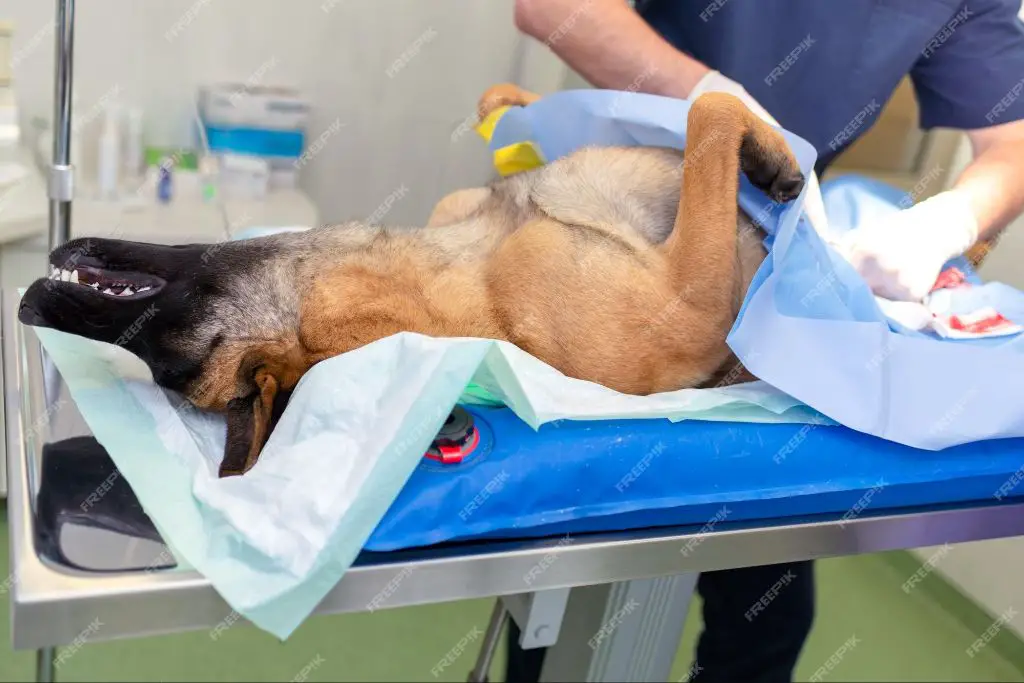What Dog Breeds Have the Highest Cancer Rate? An Introduction
Cancer is a sadly common condition among all dog breeds and a leading cause of death for older canines. However, certain breeds are genetically predisposed to develop certain types of cancer. Knowing if your dog is at high risk for developing cancer can inform early health screening and preventative measures. Understanding your dog’s likelihood of developing cancers that are common for their breed can help ensure you catch issues early and give your dog the best chance at a long, healthy life.
In this article, we will provide an overview of the dog breeds most susceptible to cancer, the most common cancers affecting these high risk breeds, potential causes for increased cancer rates, and steps owners can take to reduce their dog’s cancer risk. This information will empower owners of high risk breeds to maximize their dog’s health.
Top 5 Dog Breeds with Highest Cancer Rates
When looking at the rate of cancer in dogs, unfortunately some breeds are more prone to developing cancer during their lifetime than others. After reviewing veterinary medical data and breed-specific studies, the following 5 dog breeds show the highest rates of cancer:
- Bernese Mountain Dogs – This breed has one of the highest rates of cancer among all dog breeds, with reported rates between 27-35% or even as high as 50%. Common cancers seen in Bernese Mountain dogs include mast cell tumors, lymphoma, osteosarcoma and histiocytic sarcoma.
- Flat Coated Retrievers – Approximately 60% of Flat Coated Retrievers will develop cancer within their lifetime, with the most common being hemangiosarcoma, mast cell tumors, lymphoma and osteosarcoma. Their high cancer rate is linked to overbreeding and a limited gene pool.
- Golden Retrievers – Over 60% of Goldens will develop cancer, with the most common being lymphoma, mast cell tumors, hemangiosarcoma, osteosarcoma, and skin cancers. Their popularity has led to rampant irresponsible breeding and genetic issues.
- Boxers – One report showed 72% of Boxers developed cancer, in particular mast cell tumors, brain tumors, lymphoma, and bone cancer. Their brachycephalic head shape also contributes to high rates of brain tumors.
- Rottweilers – This breed has high rates of osteosarcoma, a common bone cancer, as well as lymphoma, hemangiosarcoma, and mast cell tumors. More than 40% develop cancer in their lifetime.

Bernese Mountain Dogs
Bernese Mountain Dogs have some of the highest cancer rates of all dog breeds. A report from the UK Kennel Club found a 40% cancer rate in Berners, with death from cancer at 10 times the average across all breeds.
The most common cancers in Bernese Mountain Dogs are malignant histiocytosis, osteosarcoma, and lymphosarcoma. According to one study, 45% of Berner deaths were from malignant histiocytosis, compared to less than 1% of deaths due to this cancer across all canine breeds.
Bernese Mountain Dogs have a genetic predisposition to certain cancers. Their high rates of cancer are likely due to breeding practices that have reduced the population’s genetic diversity and increased disease susceptibility.
Flat Coated Retrievers
Flat Coated Retrievers have one of the highest cancer rates of any dog breed. Studies show that over 40% of Flat Coated Retrievers will develop cancer in their lifetimes. The most common cancers found in this breed are hematopoietic, mammary gland, and osteosarcoma cancers. According to the Flat-Coated Retriever Society of America, nearly half of all Flat Coated Retriever deaths are caused by cancer.
The shorter lifespan of Flat Coated Retrievers can largely be attributed to their high susceptibility to cancer. The average lifespan of this breed is between 8-10 years, which is less than most other Retriever breeds. Aggressive screening and early detection of cancer is critical for Flat Coated Retrievers, as their cancer tends to develop and spread rapidly. Owners of this breed should be vigilant about performing routine vet checks and cancer screenings.

Golden Retrievers
Golden retrievers have one of the highest cancer rates of all dog breeds. Among Golden Retrievers, 61% will get cancer in their lifetime compared to an average of 27% across all dog breeds. The most common types of cancers in Golden Retrievers are:
- Lymphoma – accounts for up to 24% of all cancers in Golden Retrievers
- Mast cell tumors – around 16% of cases
- Hemangiosarcoma – approximately 12% of cancers
- Osteosarcoma – about 10% of cancers
The high cancer rates in Golden Retrievers are linked to genetics and overbreeding. The more limited the gene pool due to intensive inbreeding, the higher the chance of genetic mutations leading to cancer. Responsible breeding focusing on health and genetic diversity is critical for reducing cancer risk in this loving breed.
Boxers

Boxers are known for being energetic and playful dogs, but they are also prone to cancer. Approximately 38.5% of Boxers will develop cancer at some point in their lives.
The most common cancers found in Boxers are mast cell tumors, lymphoma, and brain tumors. Mast cell tumors are the most frequent cancer diagnosed in Boxers, accounting for 16% to 21% of all cancers seen in this breed. Boxers have a lifetime risk of developing mast cell tumors that is about 8 times higher than the risk across all breeds.
Lymphoma is another major concern, representing 11% to 24% of cancers in Boxers. Brain tumors are also more prevalent in Boxers compared to other breeds. In one study, brain tumors were the cause of death in 13% of Boxers. The incidence of brain tumors for Boxers was about 5 times higher than the mixed breed population.
Male Boxers are more prone to cancer than females, and neutered dogs have a significantly higher risk than intact dogs. White Boxers also have an increased risk for certain cancers compared to fawn or brindle colored Boxers.
Rottweilers
Rottweilers are the fourth dog breed most prone to developing cancer in their lifetime. Approximately 38% of Rottweilers will be diagnosed with cancer, with the average age of diagnosis being 8 years old. The most common cancers seen in this breed are osteosarcoma (bone cancer), lymphoma, and mast cell tumors. Rottweilers seem to have a genetic predisposition for developing these cancers compared to other breeds. Some factors that contribute to their high cancer rates include their large body size which requires more cell divisions, and a tendency to have excessive inflammation. Rottweilers used for breeding should be screened for common genetic cancers to reduce risk in future generations.
Causes of High Cancer Rates
There are several factors that contribute to the development of cancer in dogs:
Genetics – Some breeds are genetically predisposed to certain types of cancer. For example, Golden Retrievers have a high incidence of lymphoma and hematopoietic cancers. Bernese Mountain Dogs have a high rate of histiocytic sarcoma. Genetic factors play a key role in these breed-associated cancers.
Age – Like humans, cancer rates in dogs increase with age. Senior dogs (over age 8-10) have a higher risk as errors accumulate during cell division over their lifetime. The longer a dog lives, the higher the chance of cancerous mutations.
Environmental causes – Carcinogens in the environment, secondhand smoke, pesticides, herbicides, pollution, and UV radiation may contribute to cancer development in dogs. Exposure over time can damage cells and DNA.
Neutering/spaying – Altering a dog at an early age may influence sex hormone levels in a way that increases cancer risk later in life. However, spay/neuter also protects against reproductive cancers.
Obesity – Excess body fat can promote chronic inflammation and production of proteins that encourage tumor growth. Maintaining a lean, healthy body weight helps reduce cancer risk.
Reducing Cancer Risk
There are several steps dog owners can take to lower the chances of their dogs developing cancer.
Get pets spayed/neutered. There is evidence showing intact dogs have a higher risk of some cancers. Neutering, especially before 1 year of age, has been shown to protect against mammary tumors in female dogs.

Don’t smoke around dogs. Secondhand smoke can increase the risk of lung cancer and nasal cancer in dogs.
Feed a high-quality diet. Some preservatives and ingredients in low-quality dog food may have carcinogenic effects. Choose a brand that uses quality ingredients and minimal processing.
Limit sun exposure. Long sun exposure raises the risk of skin cancer in dogs, especially breeds with light skin and thin coats. Apply dog-safe sunscreen and avoid prolonged sun exposure during peak hours.
Visit the vet regularly. Annual checkups allow for early detection of cancer, which makes treatment more successful. Vets can also recommend cancer screening tests for breeds at high risk.
Avoid obesity. Overweight dogs are more prone to various cancers. Maintain a healthy weight with proper diet and exercise.
Reduce exposure to lawn chemicals. Pesticides and weed killers may increase the risk of bladder cancer and lymphoma in dogs. Use pet-safe, organic products outdoors.
Vaccinate against infectious diseases. Some viruses are linked to increased cancer risk in dogs. Keep pets up-to-date on core vaccines.
Catch issues early. Monitor dogs for any abnormal lumps, unusual odor, changes in bathroom habits, appetite issues, or unexplained weight loss, and alert the vet promptly.
Genetics play a big role in canine cancers. While not all cancers can be prevented, following these tips can help lower your dog’s risk of developing certain cancers.
Conclusion
In summary, it’s important for dog owners to be aware of the increased cancer risk in certain breeds. Some breeds like Bernese Mountain Dogs, Flat Coated Retrievers, Golden Retrievers, Boxers, and Rottweilers are prone to developing cancer due to genetics and other factors.
Knowing your dog’s breed risk can help you monitor for early signs of cancer. Catching it early greatly improves the chances of successful treatment and survival. Discuss screening tests with your veterinarian, especially if you have a high risk breed.
While scary, the high rate of cancer in some dogs also presents opportunities. By studying these breeds, researchers gain valuable insights into the causes and potential treatments of cancer in dogs and even humans. Increased awareness and responsible breeding can produce healthier dogs over time.
Being proactive and informed is crucial for all dog owners. An awareness of your dog’s breed risk empowers you to maximize their quality of life through early detection and intervention.